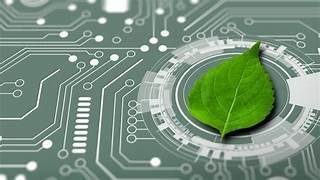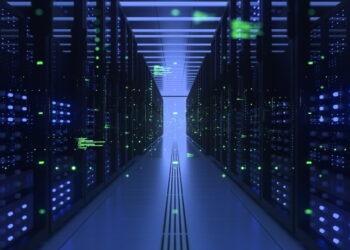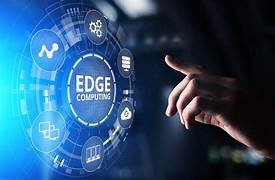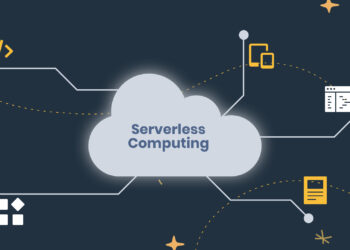In an era defined by ubiquitous technology and an ever-increasing reliance on digital infrastructure, the environmental impact of computing has emerged as a pressing concern. From the vast energy consumption of data centers to the lifecycle management of electronic waste, the IT industry, while enabling unprecedented progress, contributes significantly to global carbon emissions and resource depletion. The demand for digital services – streaming, cloud computing, AI, and cryptocurrency – continues to surge, exacerbating these environmental challenges. This growing awareness, coupled with rising energy costs and increasing regulatory pressure, has fueled a critical imperative: the widespread adoption of Green Computing.
Green computing, or “green IT,” refers to the environmentally responsible use of computers and related resources. It encompasses designing, manufacturing, using, and disposing of computer systems efficiently and effectively with minimal or no impact on the environment. This article will delve into the critical factors driving the surge in demand for green computing, explore its core principles and diverse strategies, examine its transformative benefits across various sectors, address the key challenges in its widespread implementation, and envision its profound impact on a more sustainable and efficient digital future.
The Environmental Imperative Driving Green Computing

The escalating demand for green computing is a direct response to the significant environmental challenges posed by the traditional IT landscape.
Energy Consumption of Data Centers
Data centers, the backbone of the digital world, consume immense amounts of electricity for powering servers, cooling systems, and network infrastructure. This energy demand often relies on fossil fuels, contributing heavily to greenhouse gas emissions and the overall carbon footprint.
Electronic Waste (E-Waste)
The rapid obsolescence of electronic devices leads to a burgeoning problem of e-waste. This waste contains hazardous materials like lead, mercury, and cadmium, which can leach into the soil and water, posing severe environmental and health risks if not properly managed.
Resource Depletion from Manufacturing
The production of electronic devices requires significant amounts of rare earth minerals, precious metals, and other raw materials. Mining these resources is often energy-intensive and can lead to environmental degradation and social issues.
Water Usage
Data centers, particularly those employing traditional cooling methods, consume vast quantities of water for cooling towers and evaporative systems. This puts a strain on local water resources, especially in drought-prone areas.
Heat Generation
Computing hardware generates substantial heat, contributing to localized thermal pollution and increasing the need for energy-intensive cooling solutions, creating a vicious cycle of energy consumption.
Carbon Emissions
The entire lifecycle of IT equipment, from manufacturing to disposal, involves processes that emit carbon dioxide and other greenhouse gases, directly impacting climate change.
Core Principles and Strategies of Green Computing
Green computing is a multifaceted discipline, employing a range of principles and strategies to minimize environmental impact throughout the IT lifecycle.
- Energy Efficiency: This is the cornerstone of green computing, focusing on reducing the power consumption of all IT components. This involves using energy-efficient hardware, optimizing software for lower power usage, and implementing smart power management systems.
- Resource Maximization: Aiming to get the most out of existing hardware through virtualization, cloud computing, and efficient resource allocation. It also involves extending the lifespan of devices to reduce the frequency of new purchases and e-waste generation.
- Responsible Disposal (Recycling and Reuse): Implementing robust programs for recycling, reusing, and refurbishing electronic waste. This prevents hazardous materials from entering landfills and conserves valuable resources by putting components back into the supply chain.
- Eco-Friendly Design and Manufacturing: Encouraging manufacturers to design products with environmental considerations in mind. This includes using fewer hazardous materials, making products more easily recyclable, and reducing energy consumption during the manufacturing process.
- Virtualization: Creating virtual versions of servers, storage devices, and network resources, allowing multiple virtual machines to run on a single physical machine. This drastically reduces the number of physical servers required, leading to significant energy and space savings.
- Cloud Computing: Leveraging shared computing resources over the internet, allowing users to consume IT services on demand rather than maintaining their own physical infrastructure. Large cloud providers often achieve greater economies of scale and efficiency in their data centers than individual organizations could.
- Power Management: Implementing software and hardware solutions that automatically adjust power consumption based on workload. This includes putting devices into low-power states when idle, dynamically adjusting CPU frequencies, and optimizing data center cooling based on real-time conditions.
- Telecommuting and Remote Work: Reducing the need for physical office spaces and daily commutes, thereby lowering energy consumption from building operations and transportation-related emissions.
- Green Data Centers: Designing, building, and operating data centers with maximum energy efficiency and minimal environmental impact. This includes utilizing renewable energy sources, advanced cooling technologies, and efficient power distribution.
Diverse Strategies for Achieving Green IT Objectives
Practical implementation of green computing involves a variety of specific approaches across different layers of IT infrastructure.
Hardware Efficiency
- Energy-Efficient Processors: Utilizing CPUs and GPUs designed for lower power consumption without compromising performance.
- Solid State Drives (SSDs): SSDs consume less power and generate less heat compared to traditional Hard Disk Drives (HDDs).
- Modular and Efficient Power Supplies: Using power supplies with higher efficiency ratings (e.g., 80 Plus certified) to minimize energy loss during conversion.
- Thin Clients and Virtual Desktops: Deploying less powerful, low-energy “thin clients” that access applications and data from central servers, rather than full-fledged desktop PCs.
Software and Optimization
- Code Optimization: Writing efficient code that requires fewer computing resources to perform tasks, thus reducing energy consumption.
- Application Virtualization: Running applications in virtual environments, separating them from the underlying operating system and hardware, which can improve resource utilization.
- Data Deduplication and Compression: Reducing the amount of data stored, which in turn lowers storage and energy requirements.
- Dynamic Resource Provisioning: Automatically allocating computing resources based on real-time demand, ensuring that resources are not over-provisioned and wasted.
Data Center Operations
- Renewable Energy Sources: Powering data centers partially or entirely with solar, wind, or hydropower.
- Advanced Cooling Techniques: Implementing innovative cooling solutions like liquid cooling, free cooling (using ambient outside air when temperatures permit), and hot/cold aisle containment to minimize energy use for cooling.
- Power Usage Effectiveness (PUE) Optimization: Continuously monitoring and improving the PUE, a metric that indicates how efficiently a data center uses energy (a PUE of 1.0 is perfectly efficient, with no energy wasted on cooling or other overhead).
- Server Virtualization: Consolidating workloads onto fewer physical servers, maximizing hardware utilization and reducing the number of idle servers.
End-User Practices
- Power Management Settings: Encouraging users to enable power-saving features on their computers and devices.
- Printer Efficiency: Promoting double-sided printing, using recycled paper, and opting for energy-efficient printers.
- Unplugging Devices: Educating users on the impact of “vampire power” (devices drawing power even when turned off but still plugged in).
Lifecycle Management
- Extended Product Lifespan: Encouraging the repair and upgrade of existing electronics rather than immediate replacement.
- Certified Recycling Programs: Partnering with certified e-waste recyclers to ensure environmentally sound disposal and recovery of materials.
- Design for Disassembly: Promoting product designs that facilitate easy disassembly and material recovery at the end of life.
The Advantages of Green Computing
The widespread adoption of green computing offers a compelling array of benefits that extend beyond mere environmental impact.
- Significant Cost Savings: The most immediate and tangible benefit comes from reduced energy consumption, leading to lower electricity bills for data centers, offices, and individual users. Optimized resource utilization also saves money on hardware purchases.
- Environmental Sustainability: This is the primary driver, leading to a reduced carbon footprint, lower greenhouse gas emissions, decreased e-waste accumulation, and conservation of natural resources. It aligns businesses with global climate goals.
- Enhanced Corporate Social Responsibility (CSR): Demonstrating a commitment to environmental stewardship improves a company’s public image, strengthens its brand reputation, and appeals to environmentally conscious customers and investors.
- Improved Operational Efficiency: Virtualization, cloud adoption, and intelligent power management lead to more streamlined and efficient IT operations. This can include better resource allocation, reduced maintenance, and fewer hardware failures due to optimized thermal conditions.
- Competitive Advantage: Companies embracing green computing can differentiate themselves in the market, attract top talent, and gain favor with increasingly environmentally aware consumers and business partners.
- Regulatory Compliance: Proactively adopting green IT practices helps organizations comply with existing and emerging environmental regulations and energy efficiency standards, avoiding potential fines and penalties.
- Better Public Relations and Employee Morale: Employees often feel a sense of pride and motivation working for an organization that prioritizes environmental responsibility. Positive public perception can also attract a wider talent pool.
- Reduced Heat and Noise: More energy-efficient hardware and optimized cooling systems in data centers and offices lead to less heat generation and lower noise levels, creating more comfortable working environments.
- Resource Conservation: By recycling, reusing, and designing for longevity, green computing helps conserve finite natural resources and reduces the demand for new raw materials.
Challenges and Roadblocks to Green Computing Adoption
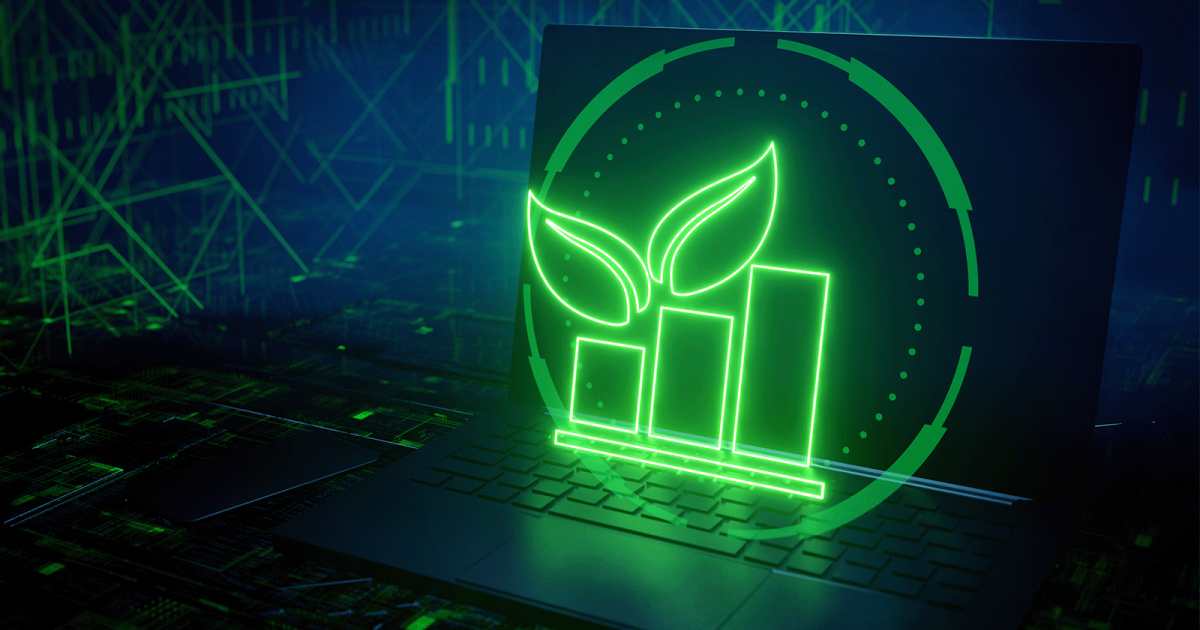
Despite the compelling benefits, the journey towards widespread green computing faces several significant hurdles.
- High Upfront Investment: Implementing green IT solutions, such as upgrading to energy-efficient hardware, investing in advanced cooling systems, or migrating to cloud infrastructure, can require substantial initial capital outlay. Justifying this immediate cost against long-term savings can be difficult for some organizations.
- Lack of Awareness and Education: Many organizations and individuals are still unaware of the full environmental impact of their computing habits or the range of solutions available for green computing. There’s a need for greater education and advocacy.
- Performance vs. Efficiency Trade-offs (Perceived): There can be a perception that energy-efficient hardware or software optimizations might compromise performance. While this was true in early stages, modern green technologies often offer both efficiency and high performance.
- Complexity of Implementation: Transitioning to green IT practices often involves significant changes to existing infrastructure, workflows, and organizational culture. Managing this complexity and ensuring seamless integration can be challenging.
- Vendor Lock-in and Proprietary Solutions: Relying on specific vendor solutions can sometimes limit interoperability and make it difficult to adopt the most environmentally friendly options if they are tied to a particular ecosystem.
- Measurement and Reporting Standards: Quantifying the environmental benefits of green computing can be difficult due to a lack of standardized metrics and reporting frameworks. This makes it challenging to benchmark progress and demonstrate ROI effectively.
- E-Waste Management Infrastructure: While recycling efforts are growing, the global infrastructure for responsible e-waste collection, processing, and material recovery is still inadequate, especially in developing regions.
- Resistance to Change: Employees and departments may resist adopting new, greener practices if they perceive them as inconvenient or disruptive to their established workflows. Cultural shifts require strong leadership and continuous communication.
- Security Concerns with Cloud Adoption: While cloud computing is a green IT strategy, some organizations may have security or data privacy concerns about migrating sensitive data to shared cloud environments, slowing adoption.
The Future Path of Green Computing
The evolution of green computing is set to accelerate, becoming more integrated, intelligent, and ubiquitous.
- AI and Machine Learning for Optimization: AI will play an increasingly crucial role in dynamically managing energy consumption in data centers and devices, predicting power needs, optimizing cooling, and even routing network traffic for maximum energy efficiency.
- Sustainable Hardware Innovation: Continued breakthroughs in materials science and chip design will lead to even more energy-efficient processors, memory, and storage devices. Research into biodegradable components and circular design principles will become standard.
- Edge Computing and Decentralization: While edge computing might seem energy-intensive, localized processing can reduce the need to send vast amounts of data to centralized data centers, potentially leading to overall energy savings by minimizing network traffic.
- Integration with Renewable Energy Grids: Data centers and IT infrastructure will be designed to integrate seamlessly with renewable energy sources, dynamically adjusting workloads to match energy availability and grid demands.
- Circular Economy for Electronics: A strong emphasis on designing products for longevity, repairability, and easy material recovery. This will involve robust take-back schemes, advanced recycling technologies, and a shift away from linear “take-make-dispose” models.
- “Green by Design” Software: Software developers will increasingly prioritize energy efficiency and resource optimization from the initial design phase, considering the environmental impact of their code.
- Transparency and Reporting: Greater transparency will emerge around the carbon footprint of digital services and hardware, with standardized reporting metrics enabling consumers and businesses to make informed, sustainable choices.
- Governmental and Regulatory Push: Governments worldwide will likely introduce more stringent regulations, incentives, and carbon taxes to accelerate the adoption of green computing practices across all sectors.
- Liquid Cooling Dominance for High-Density Computing: As compute density increases, highly efficient liquid cooling solutions will become standard, significantly reducing data center cooling energy requirements.
Conclusion
Green computing is no longer a niche concern; it is a fundamental pillar of responsible technological advancement. The surging demand for digital services has brought into sharp focus the environmental toll of our interconnected world, from insatiable energy consumption to mounting electronic waste. By embracing the principles of energy efficiency, resource maximization, and responsible lifecycle management, green computing offers a powerful pathway to mitigate these impacts. While the challenges of initial investment, integration complexity, and cultural shifts are real, the long-term benefits—encompassing significant cost savings, enhanced sustainability, improved corporate reputation, and a more resilient digital infrastructure—are compelling.
As AI, advanced hardware, and a global commitment to sustainability continue to evolve, green computing will become not just an option, but an inherent characteristic of all responsible technology. It’s about moving beyond simply doing less harm to actively building a digital future that is truly sustainable, efficient, and harmonious with our planet. The future of computing is green, and the demand is only just beginning to surge.

